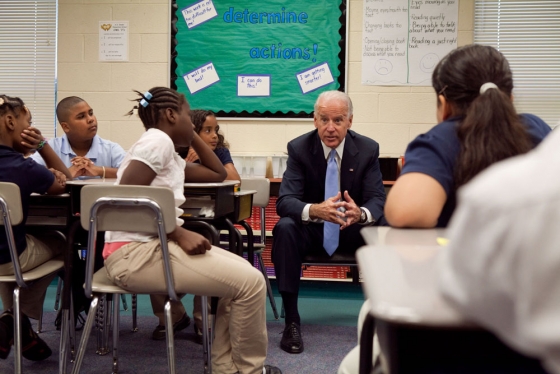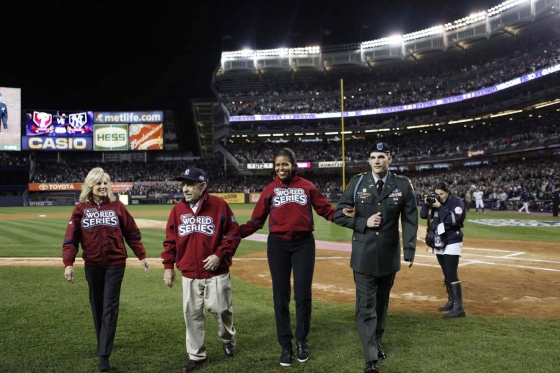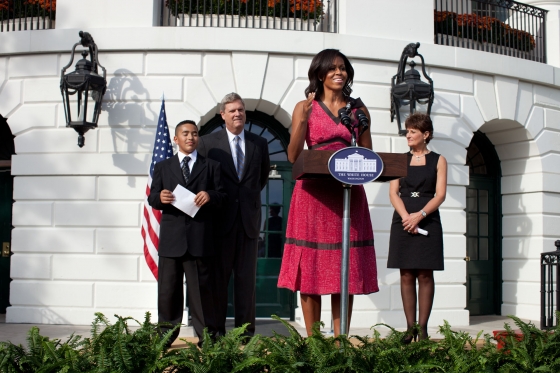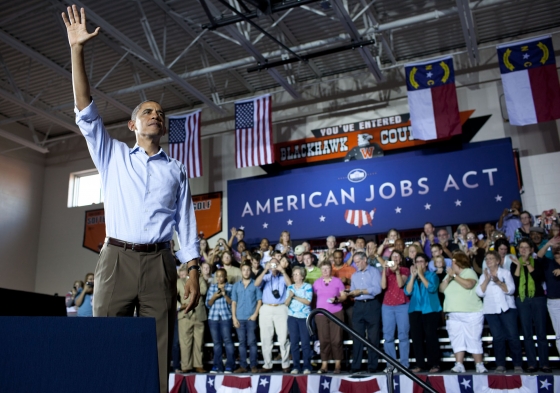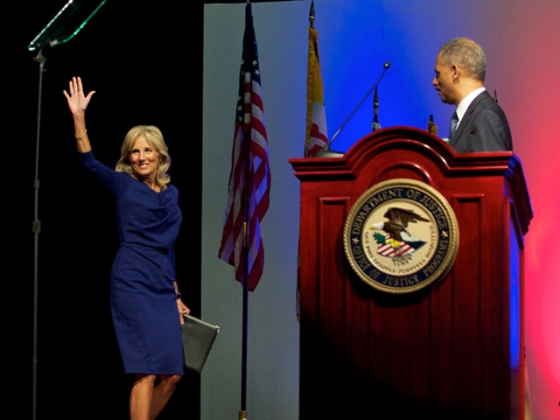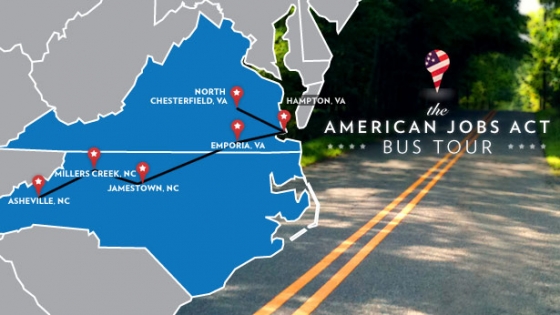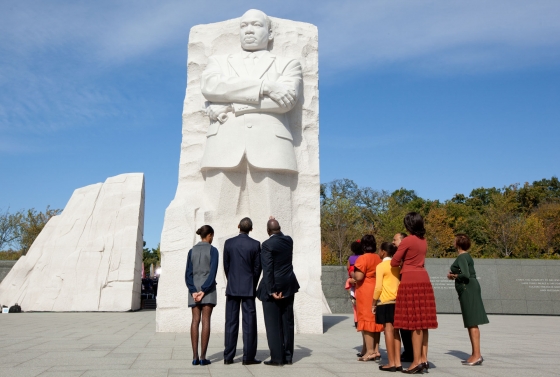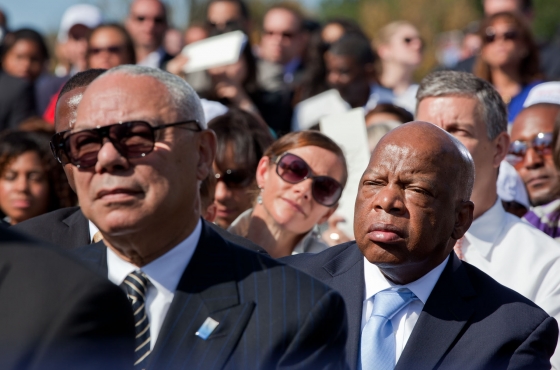-
Ed. Note: Cross-posted from Treasury Notes
On the blog this week, we’re looking at some of the myths surrounding Wall Street Reform and setting the record straight. Today’s myth:
Myth #2: Wall Street Reform Puts the U.S. at a Competitive Disadvantage Internationally
Fact: The suggestion is puzzling—that a stronger and more stable financial system would create a competitive disadvantage. The strong protections offered by U.S. markets for much of the 20th century helped make our financial system the envy of the world. Rather than disadvantage the U.S. financial system, Wall Street Reform will assure investors that U.S. institutions and markets remain the world’s most attractive destination for investment—dynamic and innovative, but with a renewed strength and resilience.In the wake of the financial crisis, the U.S. set a strong example by immediately committing to comprehensive financial reform. At the G-20 meeting in April 2009, and at multiple meetings since, world leaders have committed to a framework for financial reform to close regulatory gaps, end opportunities for arbitrage across regulatory systems, and prevent a global race to the bottom. Key elements of this framework included improving firms’ capital and liquidity positions, reforming the derivatives markets, and developing policies to address the financial risks posed by large, systemically important financial institutions. The United States moved first, enacting comprehensive financial reform last summer, and consistent with their international commitments, other major financial systems are now putting their legal and regulatory frameworks in place.
Strong U.S. leadership has been key to the important progress the world has made in the G-20 and other international fora. Working with our international counterparts, we have been able to reach global agreement on capital and liquidity requirements—to make sure that banks are better protected against stress—and are moving towards stronger standards for the derivatives markets, which were a major source of risk during the financial crisis. At the G-20 Finance Ministers meeting last week, we agreed to enhanced prudential standards for large, systemically important financial institutions, along with a new G-20 framework to resolve these firms without widespread disruption and cost to taxpayers.
Of course, as we implement our reform in the United States, it’s important that the rest of the world move forward as well, and we will continue to monitor progress in other jurisdictions. A level playing field is crucial to making sure that U.S. firms remain competitive and to preventing risk from simply shifting to other parts of the world.
The critics of reform should remember that in order to remain competitive, U.S. firms need a financial system that combines dynamism and a capacity for innovation with robust protections for investors and consumers. A strong foundation against financial shocks, whether domestic or international, is a crucial element of a strong economy: one that can attract investment; support long-term growth and job creation; and help protect American businesses, investors, and families in times of stress.
Learn more about the Dodd-Frank Wall Street Reform and Consumer Protection Act.
Neal S. Wolin is Deputy Secretary of the Treasury.
-
Lenid Keebaugh is a fourth-grade teacher at Goode Elementary School in York, Pennsylvania. The school was forced to cut 11 of its 45 teachers last year due to budget cuts, and Keebaugh says that passing the American Jobs Act will help ensure the school is fully staffed to help students succeed.
Keebaugh said that in addition to cutting grade level teachers, the school also lost all its special subject teachers—those who teach enrichment classes like music, art, and physical education. As a result, the remaining teachers must teach larger classes, and have less time to plan and discuss student progress, which previously took place during enrichment periods. With greater demands on their teachers’ time, students receive less attention and support in the classroom. Besides threatening the students’ academic success, Keebaugh said that the cuts mean they are missing out on things like physical education, which helps teach healthy habits students will carry with them for life.
Vice President Biden spoke at Goode Elementary today to explain how the American Jobs Act would put teachers back in the classroom. The plan includes funding to support 400,000 teaching jobs, including protecting up to 280,000 teachers who are at risk of being laid off due to state and local budget cuts as well as rehiring tens of thousands of teachers who have lost their jobs in the last three years. Putting teachers back in the classrooms does more than create jobs, it helps ensure students are prepared for the future. Keebaugh said that it would be “so fantastic” to get the needed staff back so she and her colleagues can give students the support and attention they need to be successful.
The American Jobs Act will help our schools in other ways, too. The President has proposed a $25 billion investment in school infrastructure that will modernize at least 35,000 public schools. This investment will create jobs while improving classrooms and upgrading our schools to meet 21st century needs. Funds can be used for a range of emergency repair and renovation projects, greening and energy efficiency upgrades, asbestos abatement and removal, and modernization efforts to build new science and computer labs and to upgrade the technology infrastructure in our schools.
-

Today, President Obama continues his American Jobs Act Bus Tour to highlight the many aspects of the American Jobs Act that will build an economy that lasts. Investments like preventing up to 280,000 teacher layoffs and putting construction workers back on the job rebuilding America's schools to provide all of our students with a world class education.
This week, we're bringing you numbers from the bus tour that demonstrate how the jobs bill will impact your community; numbers like 40, which is the average age of the American public schools that will be modernized with the American Jobs Act.
The American Jobs Act will invest in retrofitting at least 35,000 public schools across the country, supporting new science labs, Internet-ready classrooms and school renovations in both rural and urban communities. These investments will help give American students the edge they need to prepare for the 21st century economy and compete with students from around the world.
Education Secretary Arne Duncan explained the challenge we're up against:
[Imagine] trying to design the next generation of tablet computers using mainframe hardware from the Eisenhower administration. Or American automakers trying to out-engineer foreign competitors on an assembly line with equipment from the 1960s.
Unfortunately, just such antiquated facilities and barriers to innovation exist today in precisely the institutions that can least afford it: our nation’s public schools. The digital age has now penetrated virtually every nook of American life, with the exception of many public schools.
-
Tomorrow, First Lady Michelle Obama and Dr. Jill Biden are heading to St. Louis, Missouri for Game One of the World Series. But they aren’t going just to watch a ballgame...
Major League Baseball will dedicate its biggest stage to our service men and women and their families. In concert with Major League Baseball, Mrs. Obama and Dr. Biden will be encouraging Americans to recognize and serve veterans, service members and their families as part of their Joining Forces initiative and MLB’s Welcome Back Veterans program. They'll also join representatives from MLB and the St. Louis Cardinals, including Hall of Famer and Army veteran Red Schoendienst, at the St. Louis VA Medical Center for a military family appreciation event.
Before the game, Mrs. Obama and Dr. Biden will answer your questions on the Joining Forces initiative and about things you can do in your community to support veterans, active service member and their families. You can submit a question for the First Lady and Dr. Biden now on facebook or on Twitter using the hashtag #AskMichelle.
Also, stay tuned during the game for the debut of a new Joining Forces and MLB Public Service Announcement featuring the First Lady along with New York Yankees first baseman Mark Teixeira and Tampa Bay Rays outfielder Johnny Damon, both who come from military families. The PSA will be shown in the ballpark, on MLB.com and the MLB Network. If you miss it, visit JoiningForces.gov after the game to watch.
-
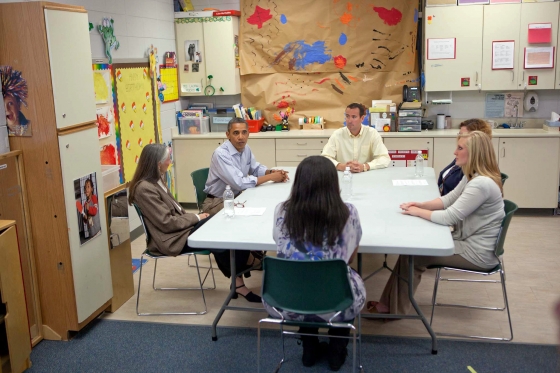
President Barack Obama holds a roundtable meeting with teachers at Guilford Technical Community College in Jamestown, N.C., during the American Jobs Act Bus Tour, Oct. 18, 2011. (Official White House Photo by Lawrence Jackson)
Jamestown, North Carolina is a small community of about 3,000 situated between Greensboro and High Point. It's home to Guilford Technical Community College, where President Obama this morning spoke at a roundtable with educators and addressed a crowd of teachers and students.
As the President sat down for his discussion with the group of teachers and soon-to-be teachers, he talked about how cuts to education at the state and local level have become an alarming trend:
[One] of the concerns that I've had over the course of the last several months -- in fact, the last couple of years -- are the layoffs that we've seen in education and the cutbacks we've seen in education all across the country. States and local governments are under a big crunch. And at precisely the time when we need to be emphasizing education and putting our resources into education, we're seeing cutbacks all across the board. Teachers are losing their jobs. Schools are having to cut back on vital programs that are helping young people.
And the American Jobs Act, the bill that I put before Congress, would help to curb some of those trends.
Now, Congress will have an opportunity to take steps to alleviate the crisis.
Monday in the Senate, Democrats introduced the Teachers and First Responders Act -- a $35 billion program designed to preserve jobs for educators, police officers, and fire fighters. Their proposal is the first part of the American Jobs Act, and Senator Harry Reid, the Majority Leader, pledged to bring it to a vote, perhaps before the end of this week.
But as the President told folks in Jamestown, that's just the first step. The American Jobs Act is about getting people all over the country back on the job:
Congress will have a chance to say whether unemployed Americans should continue to struggle -- or whether we are going to put them back to work, making our schools state-of-the-art; making sure that our roads and bridges aren’t crumbling. They’re going to have a chance to vote on whether or not we’re going to give people who are long-term unemployed a chance to get back on the job and reform our unemployment insurance system, and build a better life. They’re going to get a chance to take a stand on whether we should ask people like me to pay our fair share so that middle-class families and small businesses can get a tax cut.
-
On January 18, President Obama called for an unprecedented and ambitious government-wide “lookback” at federal regulations. The lookback requires all agencies to reexamine their significant rules and to streamline, reduce, improve, or eliminate them.
A few months ago, and after consulting with the public, over two dozen departments and agencies released plans to remove what the President has called “absurd and unnecessary paperwork requirements that waste time and money.” And we’re continuing our work to identify and eliminate regulations that don’t make sense.
Just a small fraction of our burden-reducing reforms promise billions of dollars in savings over the next five years. And many of these changes overlap with the recent recommendations of the President’s Council on Jobs and Competitiveness.
Today, one part of this larger effort is moving forward. The Department of Health and Human Services is announcing three sets of important reforms that are expected to save more than $1 billion every year in health care overhead and paperwork costs. These reforms are aimedat reducing unnecessary, obsolete, or burdensome regulations on American hospitals and healthcare providers.
-
October 18, 2011
10:12 AM EDTOn Wednesday, October 19, law students, participants in the civil rights movement, and others will gather at the White House for a screening of Freedom Riders and a panel discussion of the legal legacy of the 1961 Freedom Rides. The screening is part of National Endowment for the Humanities’ (NEH) “Bridging Cultures through Law” film series.
NEH is proud to have funded Freedom Riders, which recently won three Emmy® Awards. The film chronicles the inspirational story of how more than four hundred black and white Americans challenged Jim Crow laws in the Deep South through nonviolent action and created great change. Their courage in the face of coercive abuse helped lead to the end of segregation on buses and trains and in public facilities. Produced by Stanley Nelson and Laurens Grant, and based on Raymond Arsenault’s 2006 book, Freedom Riders: 1961 and the Struggle for Racial Justice, Freedom Riders premiered on PBS’s American Experience.
The film screening will be followed by a panel discussion with Raymond Arsenault (the author), Diane Nash (the lead organizer of the Freedom Riders), and John Seigenthaler (an assistant to Attorney General Robert Kennedy). The discussion will also draw on the experiences of seven other Freedom Riders who will be in the audience, as well as students who recently recreated the bus journey taken by the Freedom Riders this past spring.
The panel discussion is sure to be lively and thought-provoking. It will be streamed live on Wednesday at 5 p.m. EDT at WhiteHouse.gov/Live.
-
October 17, 2011
08:43 PM EDTEd. Note: Cross-posted from the USDA blog.
Given that many children eat as many as two meals a day at school, it’s pretty clear that schools have a vital role to play if we’re going to combat the disturbing rise in childhood obesity we’ve seen in recent years. Just as clear is that schools participating in USDA’s HealthierUS School Challenge honored at the White House this week demonstrate the kind of deep commitment needed to create and maintain a healthy school environment. These schools are leaders that set an example for schools across the country.
The HealthierUS School Challenge is a key component of First Lady Michelle Obama’s Let’s Move! initiative to end childhood obesity within a generation. In February 2010, USDA and the First Lady called on stakeholders to double the number of Challenge schools in a year a goal reached in June and add 1,000 schools per year for two years after that.
The 1,273 challenge schools honored at the White House on Monday voluntarily agreed to provide healthy meals based on the Dietary Guidelines for Americans, including a variety of fresh fruits and vegetables, whole-grain foods, and fat-free or low fat milk. Challenge schools also have to do what schools do best: They have to teach their students what it means to eat smart. They have to ensure that kids take part in regular physical activity. To achieve that goal some schools offer creative options, such as supporting walking clubs and community-sponsored sports tournaments, or by just keeping a basket of simple items available for students to use during recess, such as jump ropes or hula hoops.
First Lady Michelle Obama and USDA believe that schools can take a leadership role in helping students learn to make healthier eating and active lifestyle choices that will result in healthier children and young adults. Knowing how and why to eat smart is important, but a good diet must be balanced with adequate physical activity to maintain good health.
-
First Lady Michelle Obama and Dr. Jill Biden joined forces with Sears Holding's Heroes at Home program and the Rebuilding Together nonprofit organization today to put the final touches on the 1,000th home that they have rebuilt for veterans since 2007.
The home belongs to Army Sergent Johnny Agbi who served in the Army’s 10th Mountain Division and deployed to Iraq and Afghanistan. While serving as an Army medic in Afghanistan, his helicopter transport was shot down and he suffered injuries that have required him to use a wheelchair and join a comprehensive rehabilitation program. Along with fifty volunteers, the First Lady, Dr. Biden, Sears and Rebuilding Together completed a retrofit of Army Sergent Johnny Agbi’s home to make it wheelchair accessible.
The Joining Forces initiative is all about honoring and supporting America’s service members and their families, and the work of the Heroes at Home program and Rebuilding Together is an amazing example of how companies, organizations and individuals can help. They work to improve the lives of American military families by making necessary repairs, improvements or modifications to the homes of veterans and wounded warriors.
Following the build, Dr. Jill Biden thanked Sergeant Johnny Agbi for welcoming the team to his home:
Sergeant Agbi, I know I speak for everyone here today when I say, you are a true hero. You and all of your fellow veterans and service members from across the country show us every day what words like "strength" and "courage" mean. And, of course, we're also grateful to your family members for their service to our country.
Projects like today's build represent some of the incredible ways that communities are coming together to support our veterans and military families all across the United States. And these projects, and all the partners and volunteers who make them possible, embody the spirit of the Joining Forces Initiative that the First Lady and I launched earlier this year.
-
In 1976, President Gerald Ford visited West Wilkes High School aboard Marine One, the presidential helicopter. Today, President Obama dropped in by presidential bus -- as part of the American Jobs Act Bus Tour.
West Wilkes High School is in Millers Creek, North Carolina -- a small town located about 60 miles west of Winston-Salem. On Sunday, more than 1,000 residents lined up for tickets, which were distributed by local volunteers.
Wilkes County is home to around 70,000 North Carolinians and is the birthplace of NASCAR. North Wilkesboro Speedway was home to the first ever NASCAR-certified race on October 16, 1949.
President Obama arrived at the school gymnasium just after 5:00 ET. He was introduced by Dr. Stephen Laws -- the superintendent of Wilkes County Schools -- who thanked the President for the Recovery Act, which he said "saved this country." While the school system is currently operating with more than 100 fewer teachers and administrators than were employed before the recession, Dr. Laws said, not a single teacher has been laid off because of the crisis.
-
October 17, 2011
04:52 PM EDTOn Friday, I was honored to join General Raymond Odierno, Chief of Staff of the U.S. Army, and Dr. Jill Biden, the Second Lady of the United States – and a proud Blue Star mom – at the Office of Juvenile Justice and Delinquency Prevention’s National Conference, “Children’s Justice & Safety: Unite, Build, Lead.”
During this three-day conference, more than 2,500 juvenile justice practitioners and experts gathered to reflect upon and redouble current efforts to build a brighter, more secure, and more just future for our nation’s young people. This year’s conference closed with a special focus on supporting those who sacrifice so much in support of their country: our military families, and particularly the children of our service men and women.
-
Earlier today, FCC Chairman Julius Genachowski announced an agreement with CTIA-The Wireless Association under which users of cell phones, smart phones, and other wireless devices will receive automatic alerts before triggering overage charges for exceeding usage caps. We’ve all read about consumers who were surprised to receive bills in the hundreds or thousands of dollars after they or their family members unknowingly exceeded their limits. The FCC and others heard the difficulty consumers were having in recalling the details of their plans or tracking their wireless usage.
“Far too many Americans know what it’s like to open up their cell-phone bill and be shocked by hundreds or even thousands of dollars in unexpected fees and charges," said President Barack Obama. "But we can put an end to that with a simple step: an alert warning consumers that they’re about to hit their limit before fees and charges add up. Our phones shouldn’t cost us more than the monthly rent or mortgage. So I appreciate the mobile phone companies’ willingness to work with my Administration and join us in our overall and ongoing efforts to protect American consumers by making sure financial transactions are fair, honest and transparent.”
Equally impressive is how the parties reached agreement. The FCC led a collaborative effort to strengthen the wireless industry’s voluntary code of conduct and will hold it accountable through a website to be designed with input from stakeholders, including Consumers Union.
It is one more example of the Obama Administration’s commitment to smart disclosure – a low-cost, high-impact regulatory tool featured in the National Action Plan for Open Government the President announced last month – and the use of multi-stakeholder collaboration as noted in a recent OECD agreement on Internet Policymaking Principles.
Today’s announcement is the latest in a series of consumer protections that harness the power and potential of technology, data, and innovation. From the model privacy notice for personal health records vendors, to a mobile app that accesses food, drug, auto, and product recalls data, to the forthcoming final opportunity to join over 20,000 people that have already “crowd sourced” feedback on a new mortgage disclosure form that should help Americans pick the product that is right for you.
Congratulations to CTIA-The Wireless Association and its members, the FCC, Consumers Union, and other stakeholders for working together to provide this important service that will help educate consumers and empower them to save money.
-

This morning, President Obama kicked off the American Jobs Act Bus Tour at Asheville Regional Airport to talk to communities about the pieces of the American Jobs Act that will put more people back to work and more money in the pockets of those who are working.
Throughout the week, we'll bring you numbers from the road to highlight aspects of the jobs bill, numbers like 150 miles. The American Jobs Act includes an immediate investment in employing construction workers to restore 150 miles of runway at American airports and put in place a next-generation air-traffic control system to reduce travel time and delays.
President Obama has made it clear that investing in infrastructure is not a partisan issue and it's time to put those in industries hit hardest by the recession back to work rebuilding America. As the President said, "now people go to Beijing Airport and they say, I wish we had an airport like that. We can't compete that way, playing for 2nd or 3rd or 4th or 8th or 15th place."
-
October 17, 2011
02:59 PM EDTEd. Note: Cross-posted from Treasury Notes.
In the fall of 2008, a financial crisis of a scale and severity not seen in generations left millions of Americans unemployed and resulted in trillions in lost wealth. Our broken financial regulatory system was a principal cause of that crisis. It was fragmented, antiquated, and allowed large parts of the financial system to operate with little or no oversight.
Today, our most important challenge is creating stronger economic growth and helping the millions of Americans who lost their jobs get back to work. As part of that effort, we are committed to implementing new rules that will build a safer, more stable financial system—one that provides a robust foundation for lasting economic growth and job creation.
In order to achieve these goals, and help protect our economy from future crises, we must continue with the implementation of Wall Street Reform. However, more than a year after the enactment of the Dodd-Frank Wall Street Reform and Consumer Protection Act, opposition to reform persists.
Opponents are voicing a wide range of criticisms in a concerted effort to slow down, weaken, or roll back reform. Their arguments are misguided. This week, we’ll be taking a look on this blog at what those critics are saying—and rebutting their claims one by one. We begin this series by addressing one of the key misconceptions surrounding reform—its impact on small banks.
-
October 17, 2011
12:32 PM EDTApple earlier this month announced that a virtual personal assistant called Siri would be the premier feature of the new iPhone 4S. People will be able to ask Siri to book a table at a nearby restaurant, make an appointment with a friend or colleague or answer a question using the information from multiple search engines and web sites.
Siri is a significant advance in our ability to develop computers that understand and do what we mean. Many experts believe that this technology – which integrates advances in wireless communications, speech recognition, artificial intelligence and smartphones, will transform the way we interact with information technology.
What you may not know is that this technology is a direct outgrowth of a federally-funded research project called the “Personalized Assistant that Learns.” This project was backed by the Defense Advanced Research Projects Agency (DARPA), the same agency that supported the early research that led to the Internet, GPS and stealth aircraft. DARPA wanted to build “cognitive” computers for the military that can reason, learn from experience, be told what to do, explain what they are doing, and reflect on their experience.
Although a start-up company, venture capitalists and Apple itself had to make significant investments to commercialize Siri, federally-funded research played a key role in developing the basic technology. Federal basic research has also contributed to the other components of your smartphone, including the lithium-ion batteries, the hard drive, the memory chips, and the liquid crystal display.
That’s why President Obama believes that the United States must continue to invest in research and innovation if we want to “win the future.” Investments in research are the rocket fuel for the American economy – creating jobs, new products and services, and new industries.
And it’s why the President has called for replication of the DARPA model to help address other national priorities such as education and energy. ARPA-E is investing in game changing energy technologies that have the potential to dramatically reduce our dependence on foreign oil and make clean energy the profitable kind of energy. The Administration has also proposed creating an “ARPA for Education,” which would support research on learning technologies that are as effective as a personal tutor and engaging as the best video game.
Tom Kalil is the Deputy Director for Policy at the White House Office of Science and Technology Policy, Kumar Garg is Senior Advisor to the Deputy Director at OSTP.
-
The first stop on the American Jobs Act Bus Tour was Asheville, North Carolina, a city of 76,000 located in the Blue Ridge Mountains.
Air Force One landed at Asheville Regional Airport, where President Obama was greeted by Senator Kay Hagan and Asheville Mayor Terry Bellamy. He spoke just before 11:00.
The American Jobs Act includes a proposal to provide $2 billion to improve safety, add capacity and modernize infrastructure at airports across the country .
Asheville Regional Airport could be eligible for $60 million of those funds. And as the President said, there's plenty of work to go around:
In this airport right here in Asheville, you've got a runway that needs to be widened and repaired. You've got a taxiway that's in the wrong spot –- which means that planes sometimes get too close together. So we could be doing some work right here at the Asheville Airport that would help boost tourism, help to boost the economy here, put people to work right now.
But it's not just here in Asheville. All across the state, you've got highways that need to be built. You've got bridges that need to be fixed. You've got schools that need to be modernized. And that's what America used to do best. We used to build things -- built the Transcontinental Railroad; built the Golden Gate Bridge; the Hoover Dam; the Grand Central Station. There's no reason why we should sit here and watch the best highways and the newest airports being built in China. We should be building them right here in the United States of America. Right here in North Carolina.
This afternoon, the President will stop for a BBQ lunch and later visit West Wilkes High School in Miller's Creek, North Carolina.

President Barack Obama delivers remarks on the American Jobs Act at Asheville Regional Airport, Asheville, N.C., Oct. 17, 2011. The event kicks off the President’s three-day American Jobs Act Bus Tour. (Official White House Photo by Lawrence Jackson)
-
President Obama begins the American Jobs Act Bus Tour this morning.
For three days, he'll tour cities in both North Carolina and Virginia -- visiting schools, an airport, a military base, and a fire station. He'll be talking about his plan to put Americans back to work, upgrade our country's infrastructure, and keep teachers and emergency responders on the job.
Last week, Senate Republicans voted to block the President's proposal, playing politics instead of working to grow our economy.
But this fight to create jobs and rebuild our nation's roads and bridges is far from over. On Wednesday, President Obama said:
We will keep organizing and we will keep pressuring and we will keep voting until this Congress finally meets its responsibilities and actually does something to put people back to work and improve the economy.
This bus tour puts a face on the teachers, firefighters, and police officers whose livelihoods are threatened by inaction.
The trip began this morning in Asheville, North Carolina and wraps up Wednesday in North Chesterfield, Virginia.
The first event was this morning at Asheville Regional Airport, where the President spoke about the need to upgrade the nation's infrastructure.
At 5:00 ET this afternoon, the President will speak from West Wilkes High School in Miller's Creek, North Carolina. You can watch those remarks live at whitehouse.gov/live.
You'll also be able to watch the President speak tomorrow from Guilford Technical Community College in Jamestown, North Carolina using the same link. On Wednesday, we'll also stream video of President Obama as he speaks at Joint Base Langley-Eustis in Hampton, Virginia and a firehouse in North Chesterfield, Virginia.
-
Today, nearly half a century after Martin Luther King, Jr. led the historic March on Washington for equality, tens of thousands came to the National Mall in Washington, D.C. for the Martin Luther King, Jr. Memorial Dedication. The memorial to Dr. King has been open since August, but the dedication was delayed due to Hurricane Irene. As President Obama said, though delayed, "this is a day that would not be denied."
President Obama, joined by the First Family, toured the memorial and then spoke at the dedication ceremony in honor of Dr. King's work to make his dream a reality for all. During his speech, President Obama reminded us that the progress towards Dr. King's vision has not come easily and there is still more to do to expand opportunity and make our nation more just:
Our work is not done. And so on this day, in which we celebrate a man and a movement that did so much for this country, let us draw strength from those earlier struggles. First and foremost, let us remember that change has never been quick. Change has never been simple, or without controversy. Change depends on persistence. Change requires determination. It took a full decade before the moral guidance of Brown v. Board of Education was translated into the enforcement measures of the Civil Rights Act and the Voting Rights Act, but those 10 long years did not lead Dr. King to give up. He kept on pushing, he kept on speaking, he kept on marching until change finally came.
And then when, even after the Civil Rights Act and the Voting Rights Act passed, African Americans still found themselves trapped in pockets of poverty across the country, Dr. King didn’t say those laws were a failure; he didn’t say this is too hard; he didn’t say, let’s settle for what we got and go home. Instead he said, let’s take those victories and broaden our mission to achieve not just civil and political equality but also economic justice; let’s fight for a living wage and better schools and jobs for all who are willing to work. In other words, when met with hardship, when confronting disappointment, Dr. King refused to accept what he called the “isness” of today. He kept pushing towards the “oughtness” of tomorrow.
And so, as we think about all the work that we must do –- rebuilding an economy that can compete on a global stage, and fixing our schools so that every child -- not just some, but every child -- gets a world-class education, and making sure that our health care system is affordable and accessible to all, and that our economic system is one in which everybody gets a fair shake and everybody does their fair share, let us not be trapped by what is. We can’t be discouraged by what is. We’ve got to keep pushing for what ought to be, the America we ought to leave to our children, mindful that the hardships we face are nothing compared to those Dr. King and his fellow marchers faced 50 years ago, and that if we maintain our faith, in ourselves and in the possibilities of this nation, there is no challenge we cannot surmount.
-
Ed note: As part of Blog Action Day, the White House's Courtney O'Donnell, who traveled to refugee camps in Kenya this summer with Dr Jill Biden, reflects on how we can all make a difference in the lives of those suffering in the Horn of Africa.
Blog Action Day and World Food Day provide an opportunity for individuals all over the world to spark collective action around the pressing global issue of food. This is particularly important now, as drought in the Horn of Africa and famine in parts of Somalia threaten millions.
Tragically, the worst drought in 60 years is being complicated by a chaotic political situation in Somalia. People are facing not only hunger, but also terrorism and violence.In August, I traveled to Kenya along with my boss, Dr. Jill Biden and several other U.S. officials to visit the to the largest refugee camp in the world, in Dadaab, Kenya, where nearly 1,300 people arrive every day. We met with families who had walked for days or weeks, often barefoot, with no possessions, desperate to find food and medical care.
We spent time with a mother who had walked for over two weeks with her malnourished children to get to the camp. Her baby was sick with diarrhea; an ailment that seems minor to many of us but in these circumstances could be fatal. Like many of the women in the camps, this mother had walked day and night, through very dangerous conditions to try to save her children.
-
October 16, 2011
11:08 AM EDTOn August 28, 1963, the day of the March on Washington, all of the platform speakers were invited to the White House to meet with President John F. Kennedy. A few months earlier I had made my very first trip to the White House. I was only 23-years-old and also the brand-new chairman of the Student Non-Violent Coordinating Committee. It was amazing. A week into my new job I was headed to the White House to meet President Kennedy.
I was with five other great men, including Martin Luther King Jr., Roy Wilkins, James Farmer, and Whitney Young, known as the Big Six leaders of the movement. There were many women who were instrumental to our plans to march and many heroines of the movement, including Coretta Scott King, Fannie Lou Hamer, Dorothy Height, Ella Baker and Diane Nash. However, as was customary in those times, none of them were in the room that day. We told President Kennedy the people could not wait any longer. We were planning to call on thousands to march on Washington.
President Kennedy was visibly concerned. He was sitting in the Oval Office in his rocking chair, and he began to rock a little more briskly. He was concerned about violence. He wanted to cool down rising tensions, but A. Philip Randolph, the founder of the Brotherhood of Pullman Car Porters, the dean of our movement, and the visionary behind the march assured him this would be a lawful, peaceful, non-violent march. I will never forget. Randolph told him, we could not wait any longer. “Mr. President, he said, “if we cool down any more we will be in a deep freeze.”
After the largest march Washington had ever seen, the President stood in the door of his office relaxed and beaming. He shook each hand and said, “You did a good job. You did a good job.” But when he got to Martin Luther King Jr. he said, “And you had a dream.”
- &lsaquo previous
- 1
- 2
- 3
- 4
- 5
- 6
- 7
- 8
- 9
- …
- next &rsaquo









